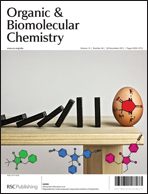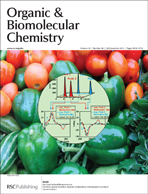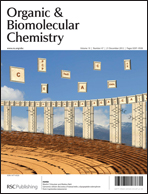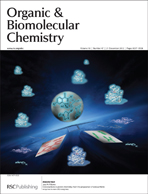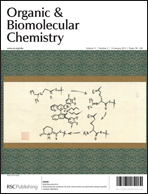 Welcome to the second issue of Organic & Biomolecular Chemistry of 2013. In this issue we have: 3 perspectives, 4 communications and 15 articles.
Welcome to the second issue of Organic & Biomolecular Chemistry of 2013. In this issue we have: 3 perspectives, 4 communications and 15 articles.
Featuring on the front cover this week is the paper of Keiji Maruoka et al. who report the catalytic asymmetric synthesis of a wide variety of cyclic amino acid derivatives using chiral phase transfer catalysts.
Stereoselective synthesis of cyclic amino acids via asymmetric phase-transfer catalytic alkylation
Taichi Kano, Takeshi Kumano, Ryu Sakamoto and Keiji Maruoka
DOI: 10.1039/C2OB26778K
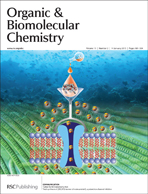 Taking us under the sea on the inside cover is the work of Tushar Kanti Chakraborty et al. who have developed a convergent method, involving Julia–Kocienski olefination, Urpi acetal aldol and Shiina macrolactonization as the key steps, for the total synthesis of the potent ion channel inhibitor (29S,37S)-isomer of malevamide E.
Taking us under the sea on the inside cover is the work of Tushar Kanti Chakraborty et al. who have developed a convergent method, involving Julia–Kocienski olefination, Urpi acetal aldol and Shiina macrolactonization as the key steps, for the total synthesis of the potent ion channel inhibitor (29S,37S)-isomer of malevamide E.
Total synthesis of (29S,37S)-isomer of malevamide E, a potent ion-channel inhibitor
Praveen Kumar Gajula, Shrikant Sharma, Ravi Sankar Ampapathi and Tushar Kanti Chakraborty
DOI: 10.1039/C2OB26533H
Both of these articles will be free to access for 6 weeks. Read all this in issue 2 of OBC today.













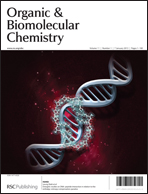
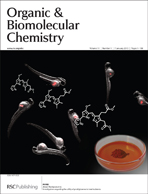



![Synthesis of a four-component [3]catenane using three distinct noncovalent interactions](http://pubs.rsc.org/services/images/RSCpubs.ePlatform.Service.FreeContent.ImageService.svc/ImageService/image/GA?id=C2OB26587G)
